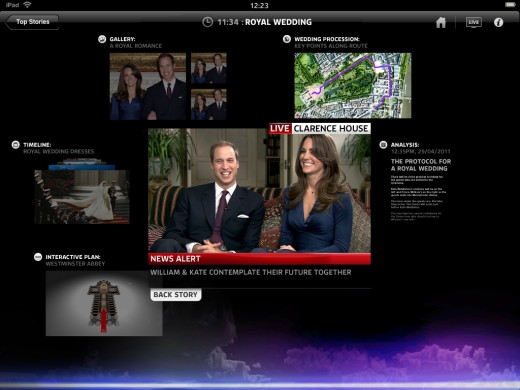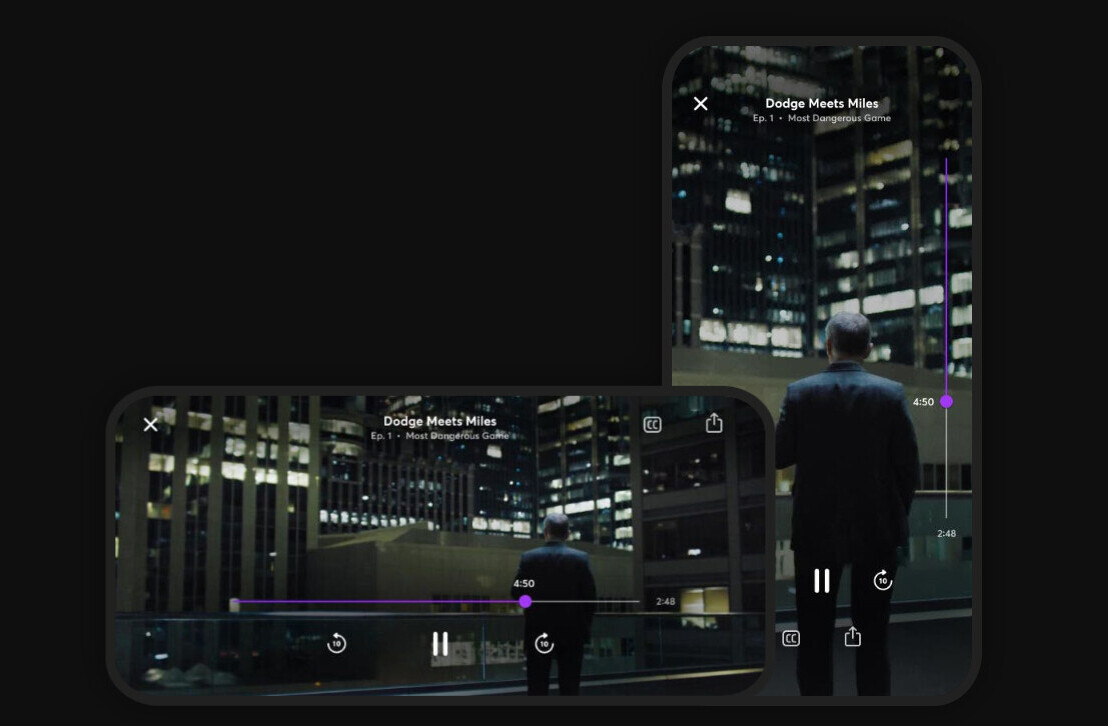
TV producers developing the next hit show format have a lot to consider when it comes to integrating interactive digital ideas into the conventionally linear medium of television.
Today I took part in a panel session at MIPCube‘s sister event, MIPFormats, called Tech Up Your Format. The idea was that me; Mark Rowland, CEO of Indie Media, and Jonathan Laor of Applicaster, each gave ’10 tech commandments’ that people developing new TV show formats should follow when looking at interactive elements to their ideas.
My ‘commandments’ took inspiration from trends we’ve covered at The Next Web, and we’ve shared them below:
1. Thou shalt not treat digital as an afterthought
Using an online presence for a TV show as a marketing tool is fair enough, but it’s far more interesting to tightly integrate the two. Just look at how Fox News used tweets from viewers to visually chart the audience’s opinion of the performance of Republican presidential candidates in an on-air debate for a simple but effective example.
2. Thou shalt not be afraid to break from linearity
The Sky News iPad app is a great example of how, when considering an app to accompany on-screen content, re-thinking how that content is consumed can reap rich rewards. As our review explained when it launched, this app pulls in packaged TV news reports, recordings on studio interviews, written content from the Sky News website, explanatory graphics and much more and lets the user explore each news story in their own way.
3. Thou shalt give your format a digital life of its own
It’s nothing new for fictional characters in TV shows to have Twitter accounts that enrich viewers’ enjoyment of a show by continuing the story even when the show’s not on air. Some producers have gone further, giving characters blogs and other social media presences.
Another approach to giving TV show formats their own ‘digital lives’ can be seen in the gameshow The Million Pound Drop Live, which not only lets viewers play along online but viewers’ performance for each question is compared to that of the in-studio contestants.
Taking inspiration from examples like this, a true ‘digital life’ for a new format can be an incredibly engaging way of building viewer loyalty.
4. Thou shalt open up your content
Look at how EMI has opened up its music via an API to allow developers to create commercial apps using them, on a revenue-sharing basis. Likewise, consider the BBC’s Virtual Revolution documentary series, which made unedited show segments available to be remixed by viewers – this is something we don’t see enough of on TV, and while it’s easy to imagine this falling into the trap of encouraging nothing but sub-par copies of Cassetteboy‘s work, with a little direction, collaboration with viewers could reap exciting rewards.
5. Thou shalt not think of online-first video as only worth serving in 5-minute helpings
There’s a piece of received wisdom that says online video should last no longer than five minutes – any longer and audiences get bored and move on, right? It’s fair to say, that’s been proved wrong by the success of the 30-minute Kony 2012 documentary. Sure, the video has come in for its fair share of criticism, but it shows that if it’s assembled in the right way, a video of any length has the potential to go viral.
6. Thou shalt think global
The recent Oatmeal cartoon strip about a man who just wants to pay for an episode of Game of Thrones, but the TV industry won’t take his money, shows that there’s a lot of work to do before the delivery of TV shows online matches the demands of consumers.
While one TV show format is never going to solve this problem on its own (a maze of rights issues and established business practices are to blame, and they take time to unravel), during my talk I urged everyone in the industry to push, in whatever way they can to alleviate the pain felt of ‘Oatmeal man’ in the cartoon.
7. Thou shalt go all-in on interface
TV producers should work on new ways of allowing viewers to interact with their content – be that thinking creatively about touchscreen-based interfaces (yes, during my talk I brought up the ‘Look how beautiful Path is!’ cliché), or inventing new hybrids of TV and gaming, such as Sesame Street’s experiments with using Microsoft’s Kinect to let children interact directly with shows. It’s still not clear exactly how they’ll deliver the idea to consumers, but the potential there is huge.
The video below was shot by Stuart Dredge at MIPCube.
8. Thou shalt hyper-personalize for your viewers
Perceptive media may still be a long way from becoming reality, but ‘hyper-personalization’ (perhaps a clearer description of what perceptive media means) of TV shows based on who’s watching could be huge for viewers and advertisers alike. Not seen a show before? Your set-top box will know this and show more of an explanation of what’s happened before, while regular viewers get some bonus content for their loyalty. Not a fan of heavy metal? Maybe the soundtrack to the action scene will be automatically changed to something more to your taste without you even knowing.
You can read more about the thinking behind perceptive media in our post here.
9.Thou shalt co-create with your viewers
Yesterday at MIPCube, Bravo’s Executive VP of Digital Media, Lisa Hsia was talking about an online social game that’s set to launch as a tie-in with the show The Real Housewives. While events in the show may make their way into the game, she said there was no reason why scenarios acted out by players couldn’t also make their way back into the show in this kind of situation.
Where appropriate, working with viewers to co-create content could reap real rewards.
10. Thou shalt consider ‘second screen’ carefully
It’s easy to fall into the trap of creating your own app for every occasion, but why not go where there’s an existing audience? Apps like Zeebox (via its API, discussed in our audio interview from earlier today) and Miso can create ‘second screen’ experiences to accompany TV shows, without the broadcasters having to start from scratch each time. That said, there’s no clear leader in this space yet, so it’s difficult to pick one to recommend.
A dose of practicality
While I stand by my ‘ten commandments’ when it comes to inspiring innovation amongst TV producers, the ‘commandments’ given by Indie Media’s Mark Rowland immediately after mine eased off the tech Kool Aid a little, and suggested that it might be better to rely on established technology that sits ‘just behind the curve’, rather than trying to be first out of the gate with every new concept or app that comes along.
After all, when there are millions of dollars at stake, using proven technology well is far less risky than taking a gamble on something that might collapse around your ears if it proves not as useful as we enthusiastic tech evangelists first believe it to be.
For more coverage of this event, see the MIP blog.
Follow all of our MIPCube coverage via our dedicated channel.
Get the TNW newsletter
Get the most important tech news in your inbox each week.







